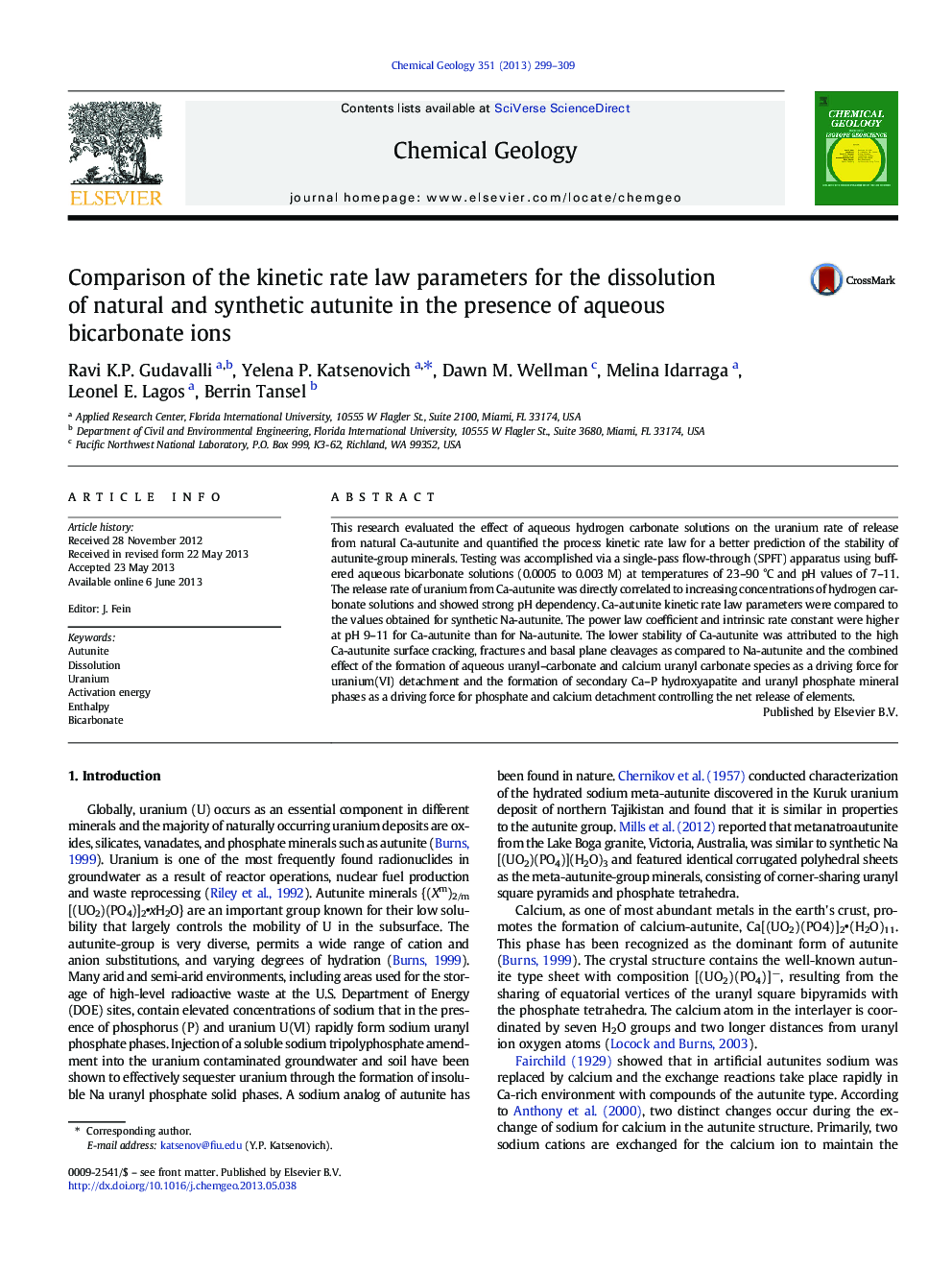| Article ID | Journal | Published Year | Pages | File Type |
|---|---|---|---|---|
| 6436936 | Chemical Geology | 2013 | 11 Pages |
â¢Manuscript discusses fundamental parameters on U(VI) release from Ca-autunite.â¢The U(VI) rate of release directly correlates to increasing IC species content.â¢Ca-autunite shows weak dependency of the dissolution rate on the temperature.â¢Ca-autunite rate law parameters were found higher than those for Na-autunite.â¢Natural Ca-autunite is less stable compared to synthetic Na-autunite.
This research evaluated the effect of aqueous hydrogen carbonate solutions on the uranium rate of release from natural Ca-autunite and quantified the process kinetic rate law for a better prediction of the stability of autunite-group minerals. Testing was accomplished via a single-pass flow-through (SPFT) apparatus using buffered aqueous bicarbonate solutions (0.0005 to 0.003 M) at temperatures of 23-90 °C and pH values of 7-11. The release rate of uranium from Ca-autunite was directly correlated to increasing concentrations of hydrogen carbonate solutions and showed strong pH dependency. Ca-autunite kinetic rate law parameters were compared to the values obtained for synthetic Na-autunite. The power law coefficient and intrinsic rate constant were higher at pH 9-11 for Ca-autunite than for Na-autunite. The lower stability of Ca-autunite was attributed to the high Ca-autunite surface cracking, fractures and basal plane cleavages as compared to Na-autunite and the combined effect of the formation of aqueous uranyl-carbonate and calcium uranyl carbonate species as a driving force for uranium(VI) detachment and the formation of secondary Ca-P hydroxyapatite and uranyl phosphate mineral phases as a driving force for phosphate and calcium detachment controlling the net release of elements.
